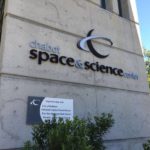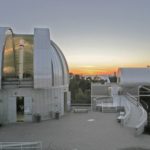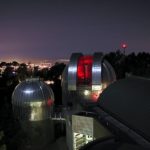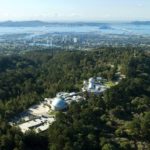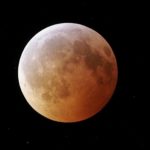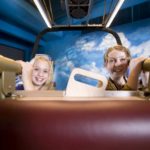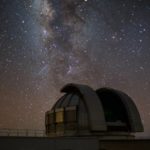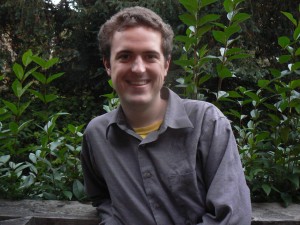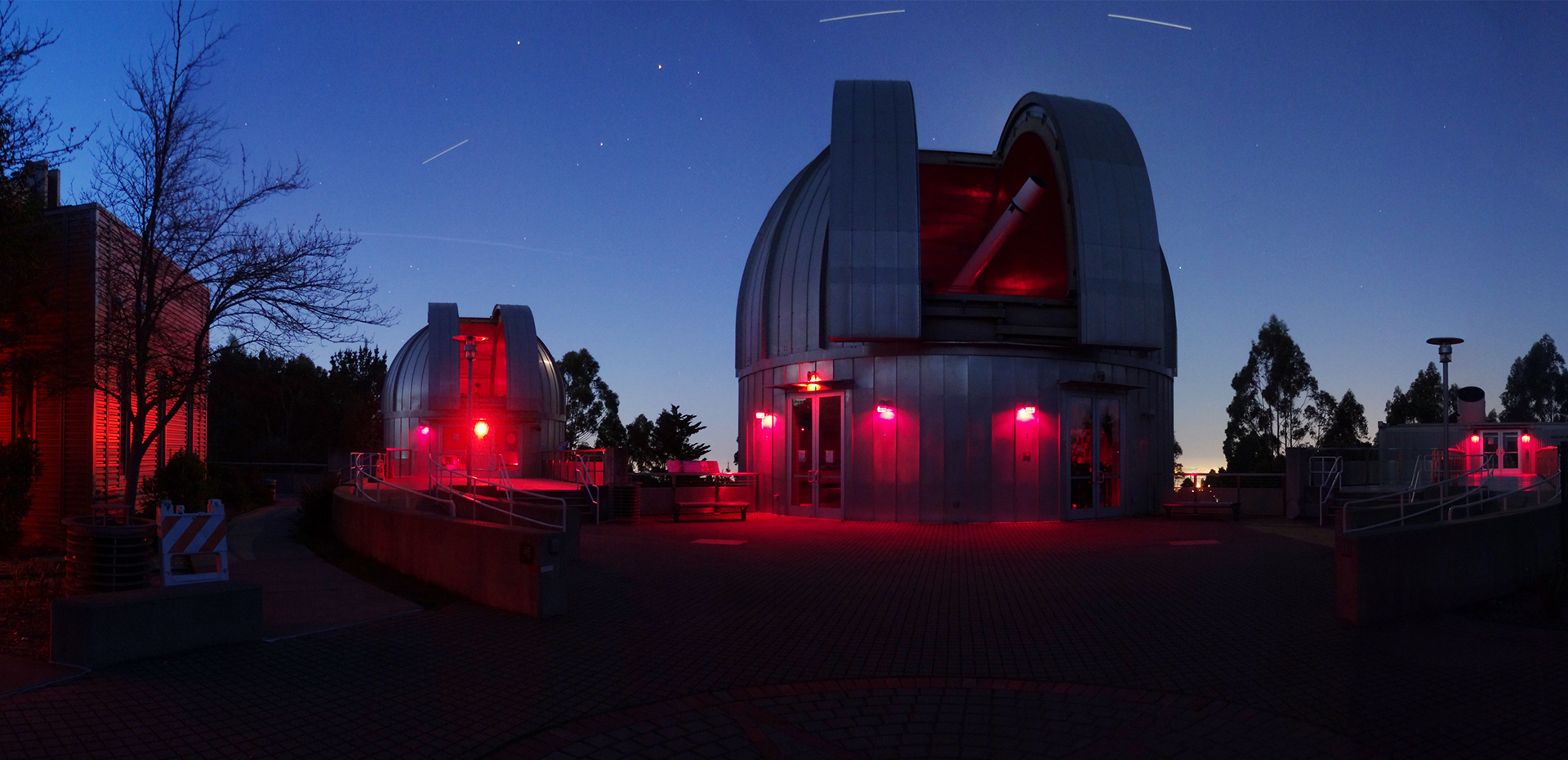
By Nate Gartrell
Every night when the stars come out, we’re reminded of our place in the vast universe, and of the fundamental question that humans have been asking for thousands of years: what else is out there? That’s maybe why the science of astronomy has a certain unparalleled allure to it, and why simple discoveries about the chemistry of celestial objects or discoveries of new planets instantly make headlines around the world.
At Oakland’s Chabot Space and Science Center, researching these mysteries and giving the public an accessible, up-close view of outer space has been a year-round focus since 1883, when it opened as an observatory in the East Bay. It is home to the largest refractor telescope west of the Mississippi—one of three tremendous telescopes at the center—as well as a planetarium, a publicly accessible observatory, and dynamically changing exhibits. From the 1880s till the turn of the century, it served as the official timekeeper for the Bay Area, and in 1970, it played a little-known key role in the rescue of the nearly disastrous Apollo 13 lunar mission.
“There is an innate curiosity in space exploration, and we use that spark of curiosity to ignite learning,” said Mary Catherine Frantz, a marketing associate with the Chabot Space and Science Center. “By creating opportunities to experiment, tinkering and dive into topics, we create the next generation of discovery.”
Chabot is preparing to soon celebrate their 20th year at its Skyline campus, but there are still plenty of events on the horizon for 2019, which are expected to draw thousands of folks. They range from opportunities to witness rare astronomical happenings to the straight-up whimsical, like their upcoming First Friday that focuses on the Chemistry of Candy or their August Bubble Festival.
“BubbleFest was exactly what it sounds like,” Frantz laughed. “We had bubble blowing stations, world-renowned bubble performers, robots that can blow bubbles and other engaging and fun activities that the entire family can get into.”
It is also well known for regular “First Friday” events, with a new theme on the first Friday of each month, centered on a new and exciting theme each month.
“Our First Fridays remain publicly accessible with free parking and a low-cost night of activities for everyone to enjoy… there are always new activities, a new theme, and of course the ability to go and see the telescopes,” she continued.
The next First Friday, in November, will focus on what astronomers do at night when they aren’t stargazing: sleep.
“It’s all about the science of sleep. We take a topic that creates interest and then use engaging activities that bring relevance to STEM concepts. We’re doing some hands-on activities, listening to a bedtime story, and we’re encouraging people to come in their pajamas,” Mary Catherine said.
There is a healthy mix of annual celebrations and events, each typically inspired by the ever-changing sky. For instance, on November 11th, Chabot is holding a morning event to celebrate a rarity: the planet Mercury will briefly pass across the sun, and the public is invited to view this in real-time from 7:30 a.m. to 10:30 a.m. It won’t happen again for more than 20 years.
Chabot is an excellent gathering spot for a variety of astronomical events, with a destination more removed from light pollution and astronomers there to answer questions.
“We just had a full moon on Friday the 13th, and that was a really exciting occurrence that won’t happen again for decades,” Mary Catherine said. “To bring people together to experience celebrate those moments creates a sense of community among lovers of astronomy and science as a whole.”
On October 26th, Chabot is holding a Starlight Gala, to benefit its youth educational program. Supporters of science and community leaders will come together for dinner and a chance to celebrate their Champions of Science awardees, Dr. Yvonne Cagle and Dr. Eugene Tu. Afterwards, the 21+ Starstruck Costume Party is shaping up to be the biggest Halloween party in the Bay Area, stepping into the mysterious world of alchemy with a laser show, performers, a unique dance floor and inspired drinks.
Chabot is known for its many exhibits and immersive educational programs geared toward youth, like its exhibit, Project Create that hosted summer activities for early learners.
“We’re working on creating new experiences geared toward early learners that are creative and exciting and different. Everything from building an earthquake-proof structure to experimenting with color to taking a look through microscopes at creepies and crawlies in compost,” Mary Catherine said. “We are always opening up something new and fun for early learners that is hands-on and dynamic, but still ties into STEM and STEAM learning.”
Chabot is also home to three of the most important publicly accessible research tools in the Bay Area: its mighty telescopes, two of which are more than a century old. Every week, anyone can come to check them out. If you’re interested, go to Chabot any Friday or Saturday, weather permitting, from 7:30 p.m. to 10:30 p.m.
“We are the only science center on the West Coast that provides free weekly access to our research-class telescopes,” Mary Catherine said.
Chabot’s history dates back to the Reconstruction era when Oakland’s then-school superintendent decided that the city should have its own world-class telescope, after observing a similar device at a high school in Philadelphia. That led to the 1883 construction of the eight-inch refracting telescope (the term refers to the type of lens), known as “Leah” (pronounced like the Star Wars princess). The telescope is still in existence today and was followed by telescopes “Rachel” in 1914, and the center’s biggest and most powerful by far—the 36-inch reflecting telescope “Nellie”—in 2003.
The telescopes have had homes in San Francisco, as well as Chabot’s previous Oakland home on Mountain Boulevard. Because people discovered that Chabot was built on top of the Hayward Fault, it was relocated to its current Skyline Boulevard location in August of 2000 (lunar explorer Buzz Aldrin was at the grand opening).
In 1970, the Chabot observatory came to the rescue of Apollo 13 astronauts Jim Lovell, Jack Swigert, and Fred Haise, after an overlooked flaw in the aircraft caused a short mid-mission, leading to the destruction of an oxygen tank and nearly causing the aircraft to explode in outer space. Instead, the crew was able to return home by orbiting the moon and using its gravity to slingshot the damaged aircraft back to Earth. As Apollo 13 began to emerge from the dark side of the moon, NASA needed to know its precise location. As luck would have it, Chabot’s Oakland observatory was the only place in NASA’s network with clear enough skies to spot the spacecraft on that April day.
“Chabot got the call saying they needed the precise location,” Mary Catherine said. “We brought together the volunteers, college students, and astronomers on-site and they were able to locate it … To be a part of that moment in history was fantastic.”
Nowadays, in Chabot’s Challenger Learning Center, visitors can recreate lunar missions and other ventures into space, in a space flight simulator that is usually reserved for bigger groups. It’s typically available for school field trippers, but Chabot also holds an annual Valentine’s Day event at the Challenger Learning Center.
“Couples will come together for a glass of champagne and a chance to go into space every Valentine’s Day,” Mary Catherine said. “We’re always looking for new fun ways to be a gathering place for the community.”
Chabot Space and Science Center is located at 10000 Skyline Boulevard in Oakland. It is open Wednesday through Sunday, from 10 a.m. to 5 p.m., and it is closed on Mondays and Tuesdays. For information on upcoming events, admission, and more, call (510) 336-7300, or visit chabotspace.org. You can also “like” them on Facebook at facebook.com/ChabotSpace to follow them for regular updates, and visit chabotspace.org/events/events-listing for a regularly updated event calendar.
Nate Gartrell grew up in Benicia, studied journalism in college, and has written for a handful of media outlets since age 15. He aspires to visit all 30 Major League Baseball stadiums and to hit the trifecta at the horse track.

